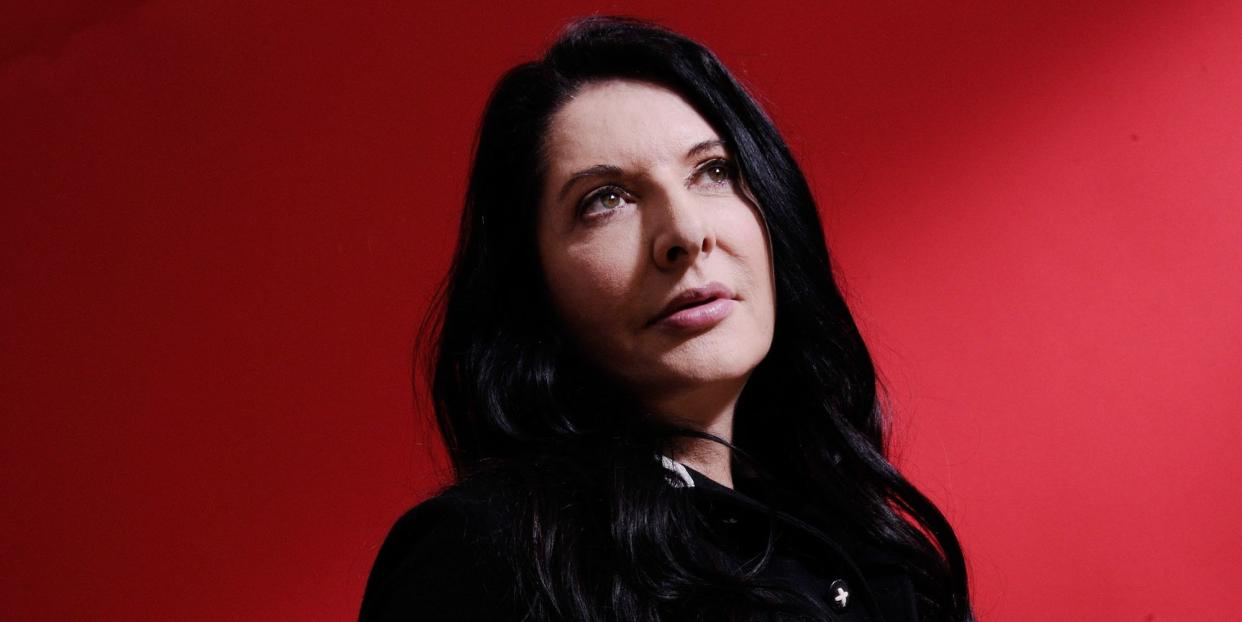Marina Abramović: "We can’t see the pandemic as hopeless, we have to keep our humour"

As an artist, Marina Abramović has never been afraid of exploring the limits of what is possible. For over four decades, her work has constantly challenged both her own endurance as well as the perceptions of those around her. Often described as ‘the grandmother of performance art’, she rose to fame due to the extraordinary lengths she was willing to go to for her craft, from cutting herself with knives to walking 10,000 kilometres along the Great Wall of China. She has always been avant-garde, but her latest project is perhaps her most future-forward yet – she is selling an augmented-reality version of herself at Christie’s auction house in London.
Entitled The Life, it is an edition of one of her performances, but in a form that seems peculiarly suited to our current world, where social distancing has become the norm and so much of our day-to-day interactions are now conducted online instead of face-to-face. Working with the producer Todd Eckert of Tin Drum, she used cutting-edge technology to create a three-dimensional image of herself in a crimson red dress. The 19-minute performance is the culmination of nearly a year of work, which involved her being recorded by 32 moving cameras to capture every aspect of her body in motion.

"Technology is developing and I’m interested in how I can use it as much as possible," says Abramović. Rather appropriately, given the topic, she is speaking to me via Zoom, as she is currently mid-way through a two-week stint of self-quarantine following her flight to London. "The problem with performance art is always how to document it," she says. "The moment the audience leave, all that is left is in the memory of the audience and in the documentation you take at the time, usually photographs and video. This new augmented reality technique is the closest that you can get to real life."
Augmented reality – or mixed reality – means that a viewer can put on a visor and a moving image will be projected into the space that they are in. It’s different to virtual reality, which is more akin to a video game – there, your own body disappears, so what you see are simply images inside your own mind. Abramović’s piece has more of a sense of magic to it. You lift the lid of a lacquered red box, remove the headset from the wooden bust that lies within it, place it upon your own face and then, like an apparition, Abramović appears. The world around you looks exactly the same – whether it’s your sitting room or your garden – except you are seeing a performance, just for you. The artist looks like a living, breathing being, captured in time.
"I am very aware of my own mortality," she says. "I always think about how this piece will have so much more value when I’m not here anymore. For me, it’s a way of preserving myself." While Abramovic had planned The Life long before the coronavirus pandemic appeared, her use of digital mediums now seems more relevant than ever, as the way we all communicate is changing.
Ever since her Rhythm series in 1973 and 1974, Abramović has explored human connections – how she interacts with the world and how it responds to her. In 2010, the Museum of Modern Art in New York held a retrospective of her work, entitled The Artist is Present, which referred to how she sat for eight hours each day in an extended performance, seated silently at a wooden table across from an empty chair, as gallery visitors took turns to sit down and lock eyes with her. At the time, Abramović subsequently described her surprise at "the enormous need of humans to actually have contact".

Today, it’s all but impossible for her to meet her audience face to face, but she has risen to the challenge of finding new ways to bring her art to a disconnected world. "This coronavirus has made me enter different territories that I’ve never been before," she says. "It’s a very exciting time for me. I have a five-hour programme planned with Sky Arts, an opera [The Seven Deaths of Maria Callas, which was broadcast online], as well as the augmented reality. Performance isn’t possible at the moment, but all these different streaming options are giving me the opportunity to still work and I’m using them. I think I’m a workaholic – I can’t stop working!"
"This epidemic is not going to last forever," she says. "We can’t see this as a hopeless situation, we have to keep our hope and humour in this moment. I come from ex-Yugoslavia – in my country black humour is very important. You need to laugh, even if there’s nothing to laugh about. I am very optimistic about everything. You have to live every day fully, working with the capabilities and restrictions you have. And not complain – complaining just makes you depressed. I always think about Matisse painting flowers during the Second World War, when everyone else was recording the wartime atrocities. That was his response to a difficult time: flowers, happiness, colour, hope."
The Life will go on sale at Christie’s on 22 October 2020.
Like this article? Sign up to our new newsletter to get more articles like this delivered straight to your inbox.
You Might Also Like

 Yahoo News
Yahoo News 
